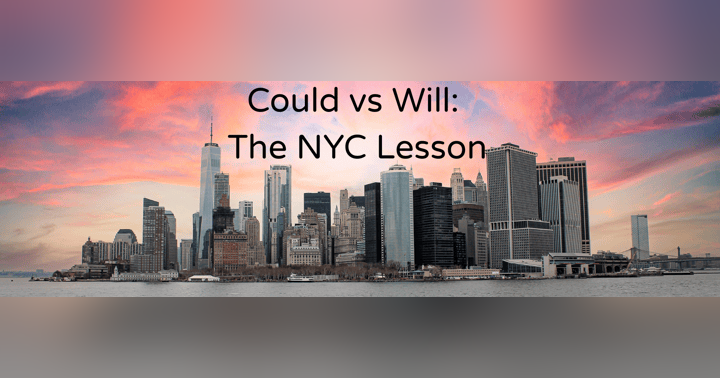Balancing Safety, Cost, and Culture: Rethinking Security in Our Workplaces
The tragic shootings at 345 Park Avenue last week hit close to home for anyone who spends time in New York office towers. At least two of those killed were directly connected to our industry. And while commercial real estate and workplace services make up one of the world’s largest industries, it’s also an incredibly tight-knit community. Many of us are only one or two people removed from those directly impacted. To those who have lost colleagues, friends, or loved ones, my deepest condolences.
This tragedy also raises an uncomfortable but urgent question: How do we make our buildings feel safer without making them feel like airports?
If you work in commercial real estate or facilities management, you know this is not a simple problem. On one hand, tenants and employees expect a welcoming, efficient, frictionless experience in the places where they work and meet. On the other, landlords and occupiers are facing increased threats—active shooters, workplace violence, and more—and are wondering if their current approaches to building security are enough.
Single-Tenant vs. Multi-Tenant: A Tale of Two Realities
Single-tenant or owner-occupied buildings have the luxury of pushing their security perimeter closer to the front door. Their lobbies can be relatively small, focused on credentialed employees and invited guests, with tight controls over who gets in. They can even actively monitor the building’s exterior and force scanning of non-employee items without much pushback because the organization controls both the culture and the policies for everyone inside.
Multi-tenant spaces present a completely different story. These buildings serve multiple companies, often with varying security positions and policies. Landlords usually need to cater to the lowest common (reasonable) denominator when it comes to balancing security and experience. That means the front door for one tenant is also the front door for dozens of others, each with their own expectations and sometimes their own concerns about how much screening and surveillance is acceptable.
And here’s where cost becomes a deciding factor. Even if everyone agrees on the need for enhanced security, who pays? And how much? In multi-tenant environments especially, the right balance is one that delivers meaningful safety upgrades at a price that every tenant in the building is prepared to pay.
The Constraints of Physical Design
There’s also the reality of the physical spaces themselves. Designing a brand-new building with a strong security lens is one thing, but the vast majority of office stock in cities like New York, Chicago, and Boston was built decades ago. These older lobbies were often designed to be grand and welcoming, not hardened against modern threats.
While retrofitting is possible, it’s rarely simple. Reworking circulation patterns, adding secure screening areas, or pushing security perimeters outward can require structural changes that are cost-prohibitive or physically unfeasible. Even when the will exists, the budget may not. Those financial limitations inevitably shape what can actually be implemented.
The Cultural Layer
Adding to the challenge is America’s uneasy relationship with surveillance.
I lived and worked in Singapore for more than a decade, and I’ll tell you—it is the safest place I have ever felt. Why? Because public surveillance is everywhere. Cameras aren’t hidden; they are part of the fabric of the city. People accept that visibility as the trade-off for security.
In the U.S., we don’t share that cultural consensus. Even when it comes to workplaces, many employees bristle at the idea of being “tracked,” whether that’s through facial authentication, location-based services, or enhanced camera coverage. This tension—between freedom and friction, between privacy and peace of mind—is at the heart of the conversation we need to have. And when you layer in the cost of implementing these technologies, the conversation becomes even more complex.
The Economics of Safer Buildings
There’s another truth we can’t ignore: all of this comes at a financial cost.
While none of us want to put a price on human life, the reality is that security investments don’t pay for themselves. Whether it’s upgrading surveillance systems, adding access control layers, staffing lobbies with trained security personnel, or deploying AI-enabled threat detection, someone has to foot the bill.
In single-tenant or owner-occupied buildings, those costs are often internalized as part of a broader corporate safety strategy. In multi-tenant properties, landlords typically recover them through increases in rent or operating expenses, passing them along to tenants who may or may not have the same appetite for those investments.
That’s the real tension: how do we invest in meaningful safety measures without pricing tenants out or eroding competitiveness? Landlords and occupiers must collaborate to develop solutions that keep people safe, maintain a positive experience, and—critically—come at a price everyone is prepared to pay.
The Messy Middle
And here’s where I want to be honest: I don’t have the answers. This isn’t just a technical or cost challenge—it’s also a deeply cultural one. And like most complex issues, the solution probably lives in the messy middle.
Even the most advanced measures have their limits. Displaying a badge may provide visibility and a sense of accountability, but it won’t prevent someone with malicious intent from entering. “Do not admit” lists in visitor management systems are only as effective as the honesty of the person signing in—they assume the use of real names or known aliases. Some measures help mitigate risk in certain scenarios, but none eliminate it entirely.
The challenge is finding a layered approach that improves safety without eroding the human experience of coming to work—and without creating an unsustainable cost burden for those who share the building.
Could We Rate Security?
Here’s one idea worth exploring: a formal building security rating system—something akin to WELL, LEED, or SmartScore.
Now, I’ve been vocal in my skepticism of building rating systems. Too often, they measure potential or paperwork instead of real-world performance. But what if a rating system could actually help here?
Imagine a performance-based rating that benchmarks how well a building addresses modern threats, from surveillance coverage and access control to emergency response capabilities. It could make that information transparent to tenants. And rather than starting from scratch, it could be rooted in CISA’s Infrastructure Security and Resilience (IST) framework, assessing buildings across practical criteria like Identify, Protect, Detect, Respond, and Recover.
The key use? Helping prospective tenants understand the security maturity of the building they are choosing to occupy, and giving landlords a way to justify the premium for well-secured spaces. Much like WELL and LEED ratings allow landlords to command higher rents and help tenants set minimum criteria for the spaces they’ll consider, a security rating could bring consistency and clarity to an otherwise opaque and subjective topic.
Would it solve the cultural and cost challenges? No. But it could bring greater alignment between landlords and tenants, and give our industry a shared language for what “good” security actually looks like.
What We Can Learn from Smart Workplaces
As I’ve shared before on the podcast, smart workplaces succeed when technology disappears into the background—when systems like digital access, booking panels, occupancy sensors, and wayfinding quietly make your day easier, not harder.
The same principle should apply to safety. If new security measures make your workplace feel like an airport—queues, metal detectors, ID checks at every door—we’ve failed at creating a productive, human-centered environment. But if we can integrate security into the flow of the workday—using seamless mobile credentials, intelligent surveillance, AI threat detection, and real-time communications—then we can elevate safety without eroding experience or blowing up budgets.
A Call for Collaboration
This is not a landlord problem or a tenant problem. It’s a shared one. Security must be treated as part of the workplace experience, not an isolated function. That means landlords and occupiers need to work together to design solutions that keep people safe while maintaining the dignity, brand, and culture of the companies inside—and just as importantly, do it at a price everyone is prepared to pay.
The alternative is stark: either do nothing and leave employees vulnerable, or overreact and turn your office lobby into LaGuardia. Neither is acceptable.
So let’s use this moment—tragic as it is—to spark a deeper conversation about what safety looks like in the modern workplace. Let’s talk about how much surveillance we’re willing to accept in exchange for security, how much we’re willing to pay for it, and whether new tools—like a building security rating—could help us get there.
Because if the office is, as I often say, the physical manifestation of who your company is, then how we design for safety says just as much about our values as the art on the walls or the logo on the door.







